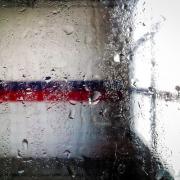Vapor Drive in Washington State

Every Washington homeowner should be aware of vapor drive. Not only does this phenomenon draw heat out of your house, but, without proper built-in protection, it can also lead to enough moisture build-up in your insulation to cause rot and mold.
What is vapor drive?
Vapor drive occurs as warmer, more humid air is drawn to colder surfaces and then penetrates (or "drives" into) insulation. Temperature has a heavy influence on vapor: hotter water vapor is better at penetrating barriers than cooler water vapor.
How does it work?
As described in the second law of thermodynamics, heat cannot spontaneously flow from cold regions to hot regions without external work being performed on the system. However, heat can and does spontaneously and freely flow the other way (from hot regions to cold).
Vapor Drive is the moisture equivalent of this law, using various transport mechanisms.
The first of these mechanisms is diffusion (the movement of solute particles from areas of low concentration to areas of high concentration). However, diffusion is a relatively minor component of the total amount of vapor transportation through exterior walls in Washington State, so I won’t dwell on it here. A hugely greater mechanism for transportation of water vapor through Washington walls is convection.
Convection occurs when air physically moves from one location to another and physically transports the water vapor (and the heat) with it. Such movement through the walls of a building occurs at penetrations (places like power outlets, vents, lights, breaks in the continuity of wall linings, etc).
It is likely that as much as 90% of the total vapor transportation through walls occurs by convection; the remaining vapour drive occurs by diffusion.
Where does convection vapor come from?
People generate a lot of vapor in day-to-day activities like cooking, showering, sweating, etc. The more people living in a building, the more vapor is generated and relative humidity in homes fluctuates between 30% and 60%. These levels are comfortable and exterior walls cope reasonably well.
Relative humidity will increase if occupancy levels are above normal, if lifestyle activities are unusual or if people resist the use of exhaust fans.
Why is this a problem?
Studies have shown that elevated relative humidity can lead to accumulation of condensation in the framing cavities of exterior walls with resultant rot. If Relative Humidity (RH) is maintained between 60% and 75%, fluid applied (painted) barriers like PVA (poly vinyl acetate) and SBR (styrene butadiene rubber) have proven inadequate and often result in damage. Under extreme conditions where RH is above 75% for extended periods, damage is evident regardless of the interior vapor barrier.
Most homes in the Pacific Northwest maintain a temperature indoors of around 70ºF all year ‘round with the outside air temperature frequently dipping below 30ºF in winter. Under these conditions, the temperature gradient across the wall provides a “driver”, along with pressure and relative humidity differentials. If, for example, the relative humidity is 70% and the temperature differential is 50ºF, the dew point is going to occur at approximately 53º F. At this temperature, vapor condenses into liquid water, accumulates in framing cavities, elevates moisture contents in framing timbers and causes often extensive and severe rot.
How can I prevent vapor drive?
Insulate concrete slabs. As previously discussed, the principal vapor driving force is a temperature differential across the concrete slab. If the underside of the slab is well insulated, the temperature differential is reduced.
Careful and judicious use of vapor barriers can be useful. However, vapor barriers can also trap water in the walls, so it is important that appropriate and correctly located vapor barriers are used, especially in the Pacific Northwest. Be sure to consult an architect to find the best defence for you.
Photo credit: Daniel*1977 / Foter / CC BY-NC-SA
 Welcome to the Stewart Consulting Blog
Welcome to the Stewart Consulting Blog
Here you’ll find expert information on all things construction. If you have a specific issue you would like David to address in a blog, ask a question.

